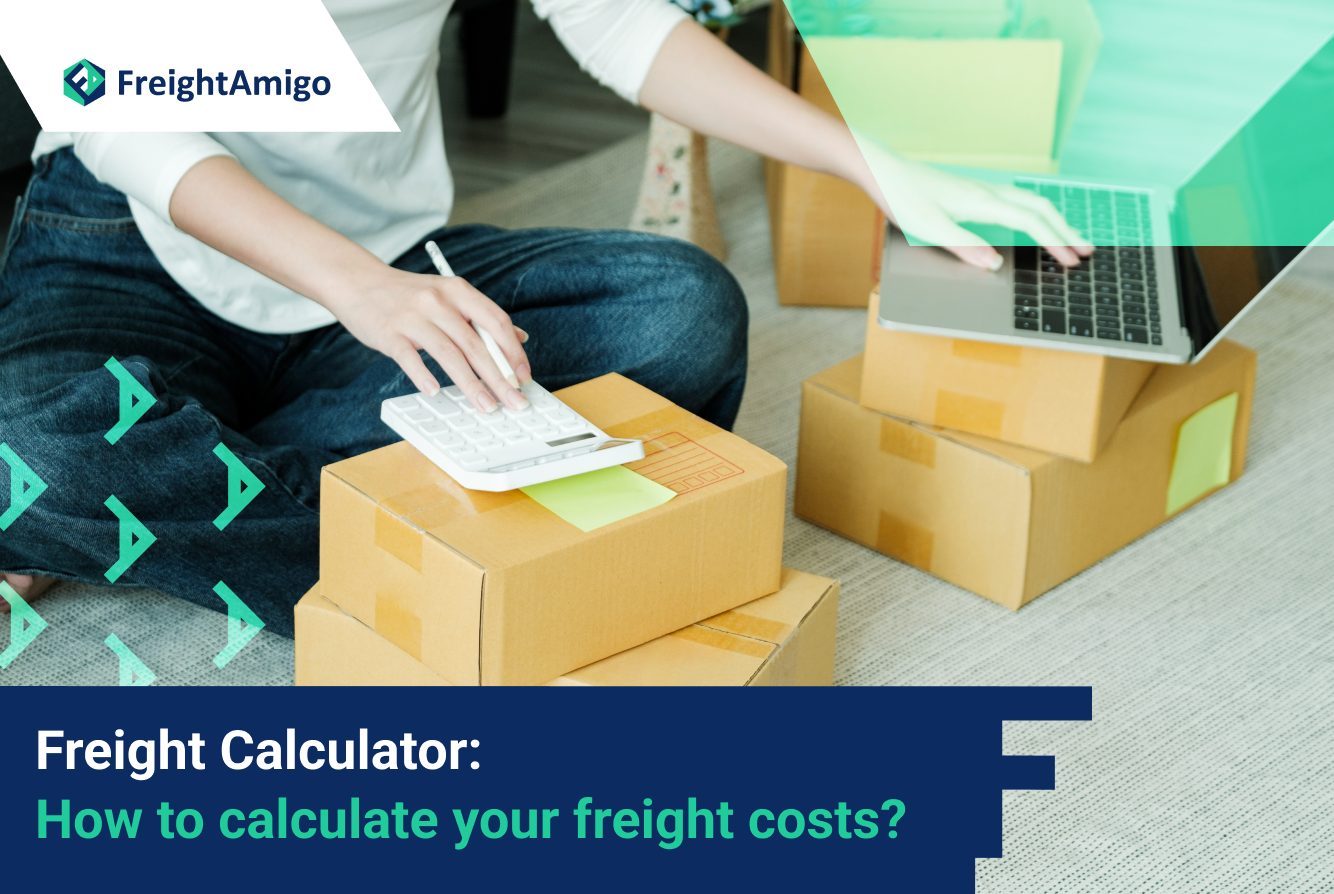Factors Affecting Freight Cost Calculations
When it comes to shipping goods, there are several factors that influence the cost of freight. Accurate shipment details are essential for obtaining precise quotes. Additionally, the mode of transportation and market conditions can also impact freight cost calculations. In this article, we will explore the key factors that affect freight costs and provide insights on how to calculate and manage them effectively.
1. Freight Weight, Dimensions, or Volume
The weight, dimensions, and volume of the freight play a crucial role in determining the cost. Carriers need accurate information about the size and weight of the cargo to allocate the appropriate space on their trucks. It is important to note that exceeding weight limits can result in additional fees or even legal issues. To calculate freight weight, you can use a freight scale or explore creative ideas, as shown in the video below.
2.Shipping Origin and Destination
The distance between the shipping origin and destination is another significant factor in determining freight rates. Longer distances generally result in higher rates due to increased fuel consumption, labor costs, and operational expenses. When providing shipment details, it is crucial to have accurate ZIP codes to ensure precise calculations. Factors such as loading dock availability, the need for appointments, and delivery requirements (e.g., bringing the freight inside, calling the consignee) can also impact the freight rates. It’s important to gather all the necessary information about the pickup and delivery locations.
- Is there a loading dock?
- Is an appointment needed?
- Will the freight be brought inside by the driver?
- Would you like the consignee to be called prior to delivery?
- Is it a business in a commercially zoned or residentially zoned area?
Base freight rates typically assume that each location has a dock or means to load and offload shipments. If there is no loading dock or forklift available, a liftgate may be required, which comes with an additional fee. Failing to consider these additional services during the calculation can lead to rate adjustments that affect your bottom line.
3.Freight Class and Density
Freight class and density are essential factors to consider when calculating freight costs. The density of the shipment is determined by its dimensions and weight, which helps determine the correct freight classification for less than truckload (LTL) freight. The National Motor Freight Traffic Association (NMFTA) in the United States has established the National Motor Freight Classification (NMFC) system, which categorizes goods into different classes based on their characteristics, such as density, handling, and liability. The freight class, along with weight, is used to determine trucking rates.
To calculate the density of your shipment and understand the corresponding freight class, you can use our density calculator and reference chart.
4.Type of Goods
The type of goods being shipped can also impact freight rates. Different commodities may require specific equipment and handling procedures. For example, shipping perishable items may necessitate temperature-controlled equipment. Additionally, certain goods, such as hazardous materials or high-value items, may require special handling, additional documentation, or insurance. It is important to identify the nature of your goods to determine the appropriate shipping method, whether it is LTL, truckload, partial truckload, or intermodal.
5.Economic Conditions
Freight rates can be influenced by various economic conditions. Fluctuations in fuel prices directly affect transportation costs, leading to adjustments in freight rates. Higher fuel costs often result in increased rates to cover the additional expenses. Seasonal demand is another factor to consider, as transportation service demand can vary throughout the year. During peak shipping times, such as the holiday season, rates may increase due to higher demand. Market conditions, including supply and demand dynamics, competition among carriers, and overall economic factors, can also impact freight rates. Market volatility and disruptions can lead to fluctuations in rates.
Want To Compare The Best Express, Air Freight, Sea Freight, Rail Freight & Trucking Rates So As To Have Better Control On Cost?
How to Save on Freight Costs
Managing freight costs can be overwhelming, but there are strategies to help reduce expenses. Here are some cost-saving ideas:
- Optimize Packaging: Efficient packaging can minimize wasted space and reduce the overall dimensions of the shipment, potentially lowering freight costs.
- Consolidate Shipments: Combining multiple smaller shipments into a single larger shipment can result in cost savings.
- Use Technology: Leveraging freight management software and automation tools can help optimize routes, improve efficiency, and reduce costs.
- Negotiate Rates: Building strong relationships with carriers and negotiating favorable rates can lead to long-term cost savings.
- Consider Intermodal Transportation: Exploring intermodal options, such as rail or sea, when appropriate can offer cost advantages over long distances.
FreightAmigo’s Freight Calculator Feature: Instant quote
FreightAmigo revolutionizes the process of obtaining shipping quotes with its Instant Quote feature. This innovative tool provides businesses with instant access to accurate and competitive prices, saving time and enabling faster decision-making. To get a quotation, customers only need to enter the place of departure and destination, along with basic information about the mailing items. FreightAmigo’s Instant Quote feature streamlines logistics operations and helps businesses make informed shipping decisions.
Remember, accurate shipment details are crucial for obtaining precise quotes. By considering the factors mentioned in this article, businesses can optimize their freight cost calculations and enhance their logistical operations.
Conclusion
Calculating freight costs involves considering multiple factors, including freight weight, dimensions, origin and destination, freight class, type of goods, and economic conditions. By understanding these key factors and implementing cost-saving strategies, businesses can effectively manage their freight costs. With FreightAmigo’s Instant Quote feature, obtaining accurate shipping quotes has never been easier. Streamline your logistics operations and make informed shipping decisions with FreightAmigo’s reliable and efficient solutions.
There Are Different Options For Cargo Transportation. If You Want To Choose The Most Convenient And Suitable Solution, It Is Best To Have The Full Support Of Logistics Experts! If You Are Planning To Ship Goods Overseas, Please Go To The FreightAmigo Page For Inquiries.
===
If you have any inquiries on logistics/supply chain, feel free to contact FreightAmigo now:
Chat with us online OR
Phone : +852 28121686
WhatsApp: +852 27467829









































